Have you ever wondered why your rice cooker bubbles while cooking rice? Is it a sign of a problem or just a normal occurrence? In this section, we will explore the science behind rice cooker bubbling and help you determine whether your rice cooker is functioning optimally.
Key Takeaways
- Bubbling during rice cooking is a common occurrence.
- Understanding the science behind rice cooker bubbling can help determine when it may be a cause for concern.
- There are preventive measures to minimize bubbling and troubleshooting tips for excessive bubbling issues.
Understanding Rice Cooker Bubbling
If you have ever used a rice cooker, you may have noticed bubbling during the cooking process. But what is the science behind rice cooker bubbling?
A rice cooker works by heating water in a sealed container to boiling point, which then turns into steam. The steam creates pressure inside the cooker, which is what cooks the rice. During the cooking process, the starch in the rice is released into the water, causing it to bubble and foam. The pressure created by the steam also helps to ensure that the rice is cooked evenly and thoroughly. This method of cooking rice is simple and convenient, especially when using a high-quality rice cooker like a Hamilton Beach rice cooker. When looking at a Hamilton Beach rice cooker comparison, it’s clear that these appliances are designed with user-friendly features and precision cooking technology to ensure perfect rice every time. With options for different sizes and settings, a Hamilton Beach rice cooker is a great addition to any kitchen.
Rice cooker bubbling is a normal process and typically not a cause for concern. In fact, it is an indication that the rice is cooking correctly. The bubbling is a result of the starch being released and the water boiling, which helps the rice cook evenly and absorb water properly.
However, excessive bubbling could be a sign of a problem. If the water is bubbling too much, it may cause the rice to cook unevenly, or even overflow from the cooker.
Understanding Rice Cooker Bubbling: A Common Occurrence
It is important to note that rice cooker bubbling is a common occurrence and is not typically a sign of a problem. It is simply a result of the cooking process and the release of starch from the rice.
However, if the bubbling is excessive or causes the cooker to overflow, it could indicate an issue with the water-to-rice ratio or the quality of rice being used. It is important to assess the bubbling levels and take corrective measures if necessary.
Next, we will explore the various causes of rice cooker bubbling and offer tips for troubleshooting and preventing excessive bubbling.
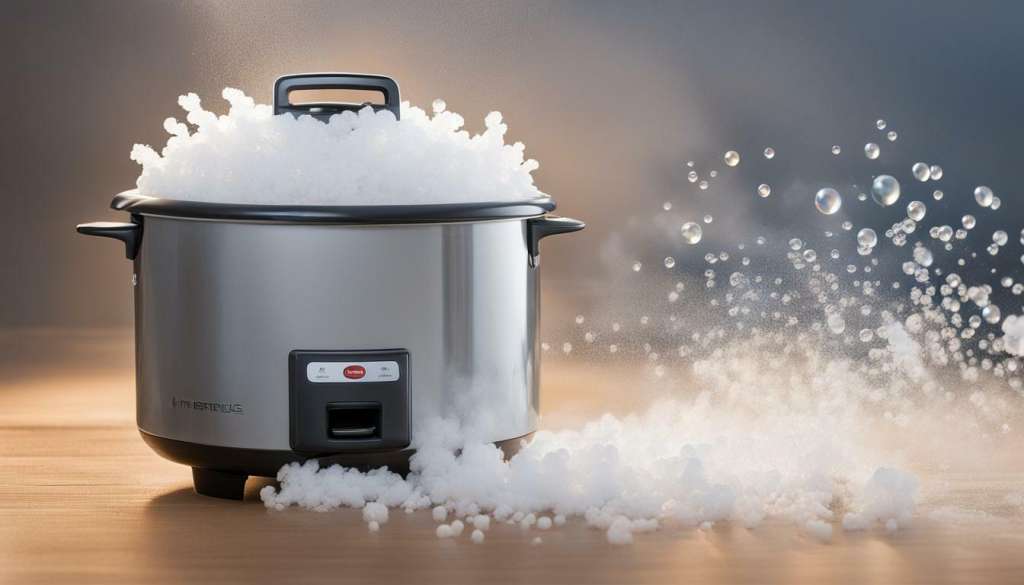
Causes of Rice Cooker Bubbling
When it comes to cooking rice in a rice cooker, bubbling is a common issue that many people face. While some bubbling is normal during the cooking process, excessive bubbling can be an indication of an underlying problem that needs to be addressed. Here are some of the most common causes of rice cooker bubbling:
| Cause | Symptoms |
|---|---|
| Incorrect water-to-rice ratio | Excessive bubbling, rice cooker overflowing |
| High rice starch content | Excessive foaming and bubbling, rice cooker overflowing |
| High cooking temperature | Rice cooker boiling over and excessive bubbling |
Other factors that can contribute to rice cooker bubbling issues include using too much water, using the wrong type of rice, and not rinsing the rice before cooking. One important thing to note is that different types of rice have different water-to-rice ratios and cooking times, so it’s essential to follow the instructions provided for the specific type of rice you are using.
If you are experiencing excessive bubbling in your rice cooker, it’s crucial to identify the cause of the problem so that you can take the necessary corrective measures. In the next section, we will help you assess whether your bubbling levels are normal or require adjustment.
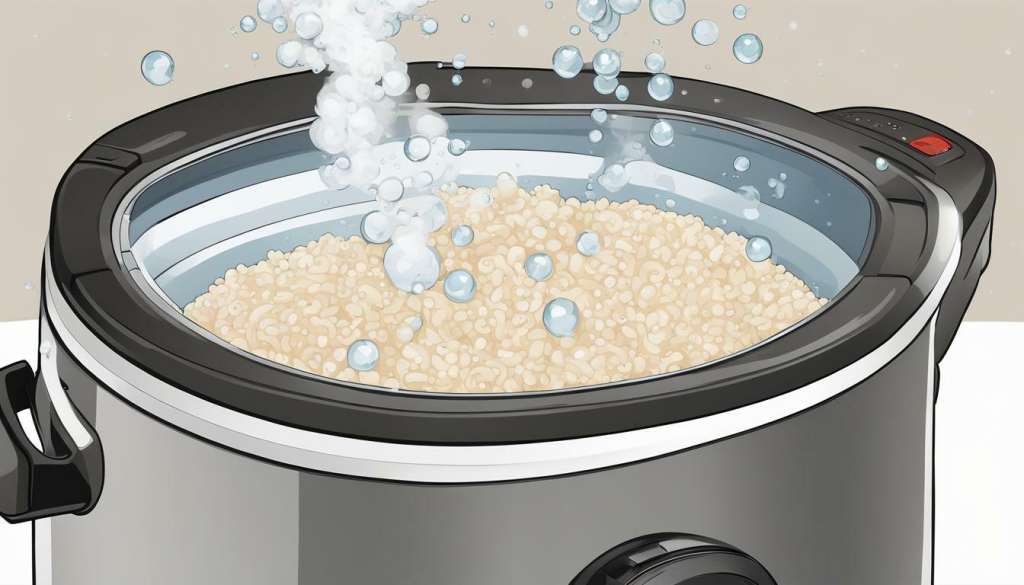
Assessing Normal Bubbling Levels
It is normal for a rice cooker to produce some bubbles while cooking rice, but excessive bubbling may indicate an issue. Generally, small bubbles during the initial heating phase are normal and indicate that the water is boiling and the rice is cooking. However, if the bubbles persist throughout the cooking process and the water level rises too high, it may be cause for concern.
To determine whether the bubbling in your rice cooker is within normal levels, start by observing the water level. The bubbling should not cause the water to overflow or boil over the top of the cooker. If the water level remains steady and the bubbles are small, your rice cooker is likely functioning normally. However, if the water level rises rapidly, it may be necessary to reduce the amount of water used in the cooking process.
It is important to note that different types of rice may produce different levels of bubbling. Brown rice, for example, may produce more bubbles than white rice due to its higher starch content. Similarly, using hot water instead of cold water may also increase the likelihood of excessive bubbling.
To ensure that your rice cooker is producing normal levels of bubbling, use the recommended water-to-rice ratio specified in the user manual and test different types of rice to determine which produces the best results. With proper water levels and appropriate rice type, your rice cooker should produce perfectly cooked rice with minimal bubbling.
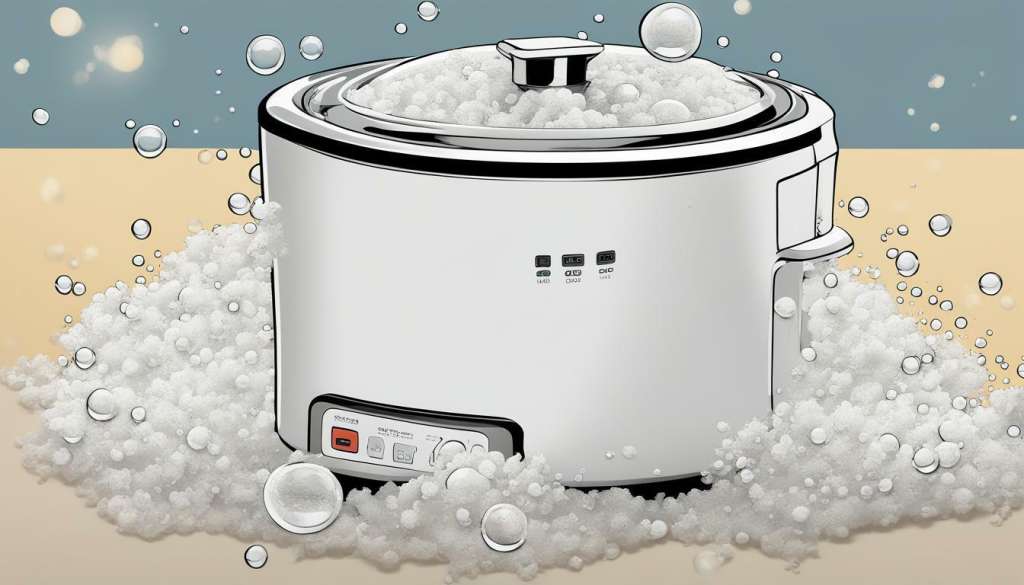
Risks and Concerns of Excessive Bubbling
While a rice cooker bubbling is a normal occurrence, excessive bubbling can lead to various issues that can be messy and inconvenient. One concern is that the bubbling can cause the rice cooker to overflow, leading to water and rice spills that can be difficult to clean. If the rice cooker is not cleaned immediately, the residue can harden and become difficult to remove, causing potential damage to the cooker.
Another risk of excessive bubbling is that it can lead to overcooked or undercooked rice. When the rice cooker bubbles too much, it can cause the rice to cook unevenly. This can result in some parts of the rice being undercooked while others are overcooked. The result is rice that is not of optimal quality, which can be disappointing for those who enjoy perfectly cooked rice.
Additionally, excessive bubbling can cause damage to the rice cooker itself. The bubbling can cause water and steam to enter the inner components of the cooker, causing damage that may be difficult to repair. This can result in the need for costly repairs or even require that you need to buy a new rice cooker.
Therefore, it is essential to keep an eye on the bubbling of your rice cooker to avoid these issues. In the next section, we will provide practical tips and solutions for troubleshooting rice cooker bubbling problems.
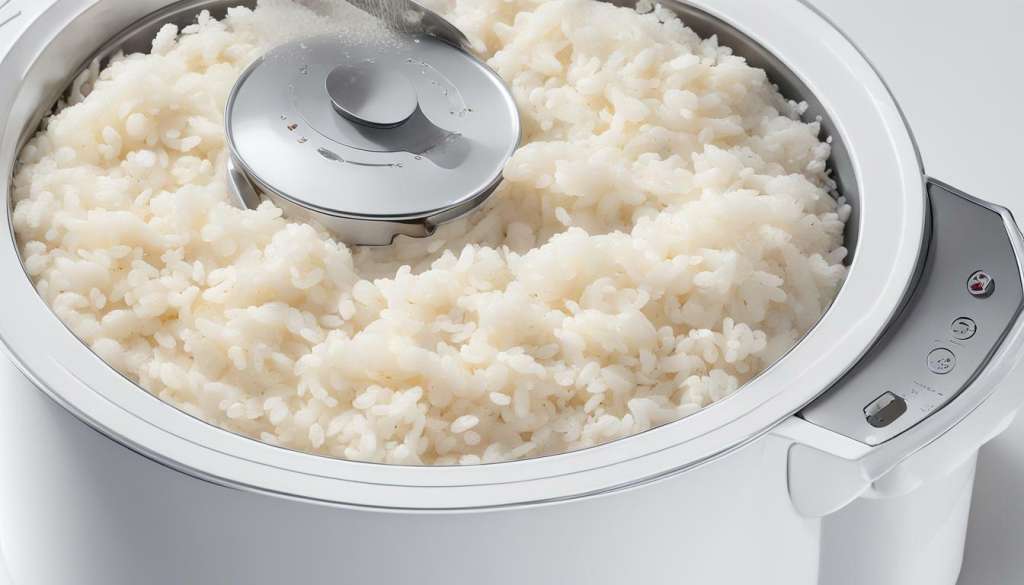
Troubleshooting Bubbling Issues
If you’re experiencing issues with your rice cooker bubbling, don’t worry – there are several troubleshooting options available to you. By following these simple steps, you can get your rice cooker back to working properly in no time.
Adjusting Water Levels
One of the most common causes of rice cooker bubbling is an incorrect water-to-rice ratio. If you notice that your rice cooker is bubbling excessively, try adjusting the amount of water you use. Use a measuring cup to ensure that you’re adding the correct amount of water relative to the amount of rice you’re cooking.
As a general rule, most rice cookers require a 1:1.5 to 1:2 ratio of rice to water. However, this can vary depending on the type of rice you’re cooking, so be sure to consult your rice cooker’s user manual for specific instructions.
Reducing Starch Content
Rice that has a high starch content can also cause excessive bubbling in rice cookers. To reduce the starch content of your rice, try rinsing it thoroughly before cooking. You can also soak the rice in cold water for 30 minutes prior to cooking to remove excess starch.
Modifying Cooking Settings
If your rice cooker is still bubbling excessively after adjusting the water levels and reducing the starch content, try modifying the cooking settings. Lowering the cooking temperature or lengthening the cooking time can help to reduce bubbling.
| Issue | Cause | Solution |
|---|---|---|
| Rice cooker overflowing | Too much water added or rice cooker too small | Reduce water level or use a larger rice cooker |
| Rice cooker boiling over | Cooking temperature too high or too much rice added | Lower cooking temperature or reduce amount of rice |
By following these troubleshooting tips, you can resolve most rice cooker bubbling issues and ensure that your rice always comes out perfectly cooked.
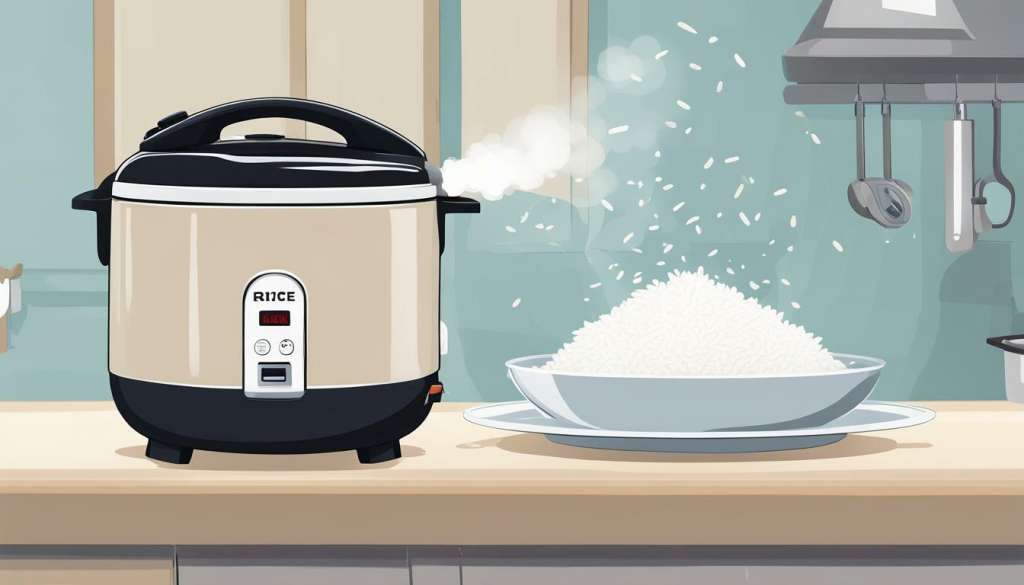
Preventing Excessive Bubbling
If you’re tired of dealing with excessive rice cooker bubbling, there are several preventive measures you can take to minimize it. By following these tips, you can achieve perfectly cooked rice without making a mess:
- Rinse your rice before cooking: This helps remove excess starch and debris that can cause bubbling. Rinse your rice thoroughly under running water until the water runs clear.
- Use the right water-to-rice ratio: Use the manufacturer’s recommended ratio for your rice cooker or follow a standard ratio of 1:1.5 (one cup of rice to 1.5 cups of water).
- Select the right type of rice: Different types of rice have different starch content, which may affect bubbling levels. For example, long-grain rice tends to produce less foam and bubble less than short-grain rice.
By taking these preventive measures, you can enjoy perfectly cooked rice without the hassle of excessive bubbling. If you’re still experiencing issues with your rice cooker, explore our troubleshooting tips in the next section.
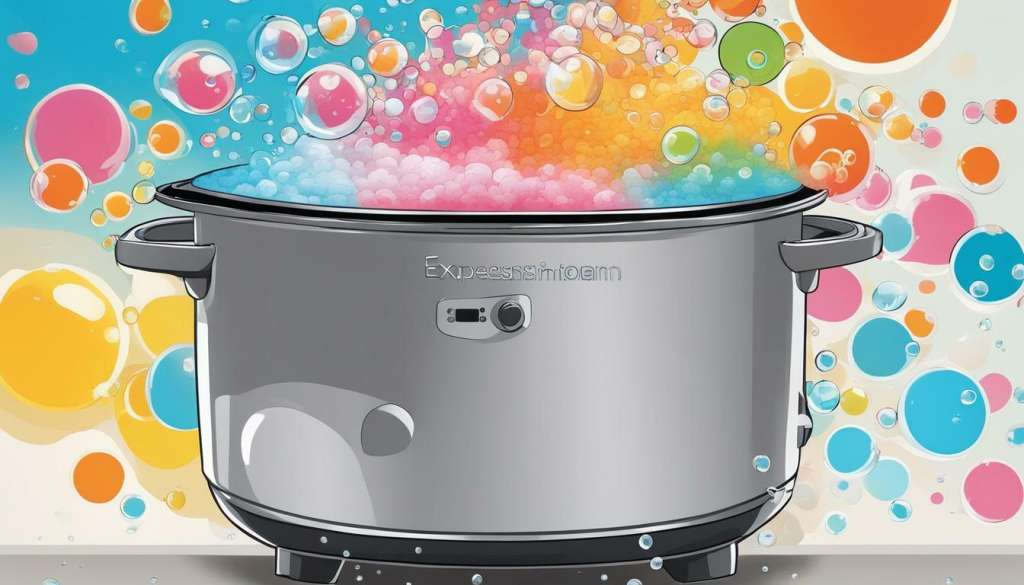
Section 8: Cleaning and Maintenance
Proper cleaning and maintenance are essential to prevent bubbling issues in rice cookers. Neglecting to clean the cooker or failing to conduct regular maintenance checks can cause residue buildup, which can contribute to excessive bubbling. To avoid these issues, follow these expert tips:
- Clean the rice cooker after every use: Wipe down the interior and exterior of the cooker with a damp cloth or sponge to remove any residue or food particles. Avoid using abrasive sponges or harsh chemicals that can damage the non-stick coating.
- Remove residue: If you notice residue buildup on the heating plate, use a soft brush or cotton swab to gently clean the area. You can also use a mixture of vinegar and water to dissolve the residue, then wipe it away with a cloth.
- Conduct regular maintenance: Check the rice cooker’s components regularly to ensure they are functioning correctly. This includes inspecting the heating plate, steam vent, and water reservoir. Consult the manufacturer’s instructions for more information on maintenance and care.
By following these tips, you can ensure that your rice cooker remains in optimal condition, preventing bubbling issues and maintaining perfect rice cooking results.
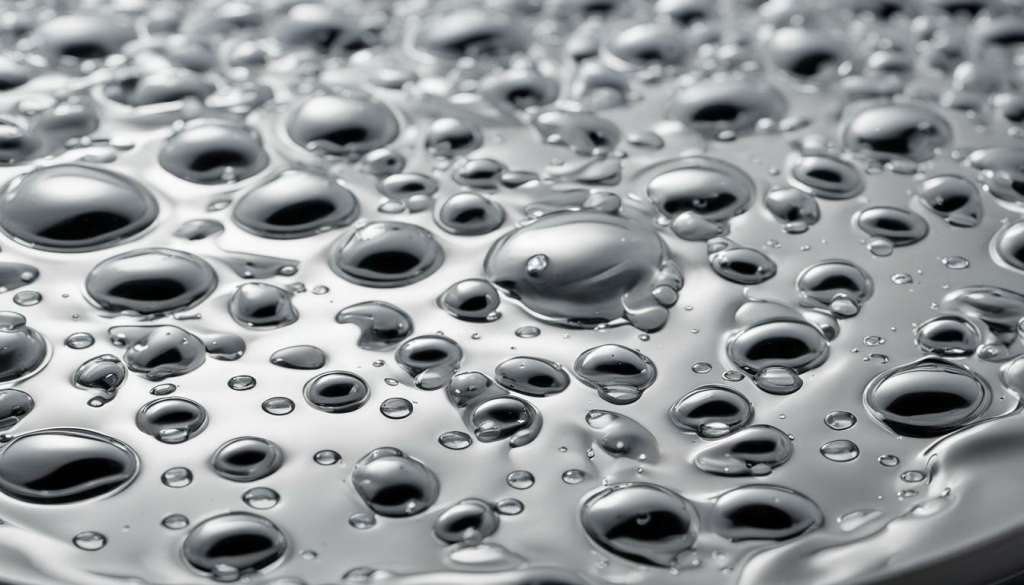
Expert Tips for Optimal Rice Cooking
If you want to achieve perfectly cooked rice with minimal bubbling, here are some expert tips to follow:
- Soak the rice: Soaking the rice for at least 30 minutes prior to cooking can help reduce the starch content and minimize bubbling.
- Choose the right type of rice cooker: Consider investing in a high-quality rice cooker with advanced features, such as fuzzy logic technology, which can adjust cooking times and temperature levels for optimal results.
- Adjust cooking times: Depending on personal preferences, adjusting the cooking time can help achieve the desired level of firmness or softness in the rice, while also decreasing the likelihood of excessive bubbling.
- Use appropriate water levels: Follow the instructions provided with your rice cooker to determine the appropriate water-to-rice ratio and ensure that you are using the correct amount of water.
- Select the right type of rice: Different types of rice require different cooking methods and water ratios. Be sure to choose the appropriate type of rice for your recipe and adjust accordingly.
By following these tips, you can achieve perfectly cooked rice without having to worry about excessive bubbling or other cooking issues.
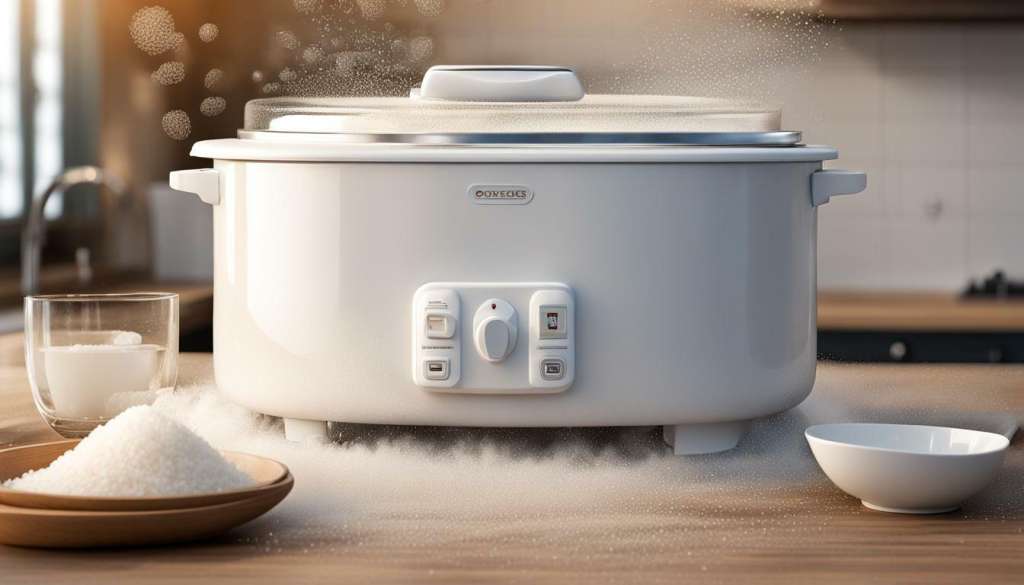
Common Misconceptions about Rice Cooker Bubbling
There are several myths surrounding rice cooker bubbling that can cause confusion and lead to unnecessary concern. Let’s take a closer look at some of the most common misconceptions:
- Myth #1: Rice cooker bubbling is always a sign of a problem.
- Fact: It is normal for rice cookers to bubble while cooking rice, as it is a result of the water boiling and the rice absorbing the liquid. However, excessive bubbling can indicate an issue with the cooking process.
- Myth #2: Rice cooker bubbling means the rice is not cooked properly.
- Fact: Rice cooker bubbling does not necessarily mean the rice is not cooked properly. It could simply be a result of too much water, too much starch in the rice, or cooking at high temperatures.
- Myth #3: All types of rice will bubble the same way in a rice cooker.
- Fact: Different types of rice have different starch levels, which can affect how much they bubble in a rice cooker. Additionally, some rice cookers may be better suited for certain types of rice than others.
By understanding the facts behind rice cooker bubbling, you can better gauge whether it is a cause for concern or simply a natural occurrence in the cooking process. Remember, a little bubbling is normal, but excessive bubbling may require troubleshooting or adjusting your cooking techniques.
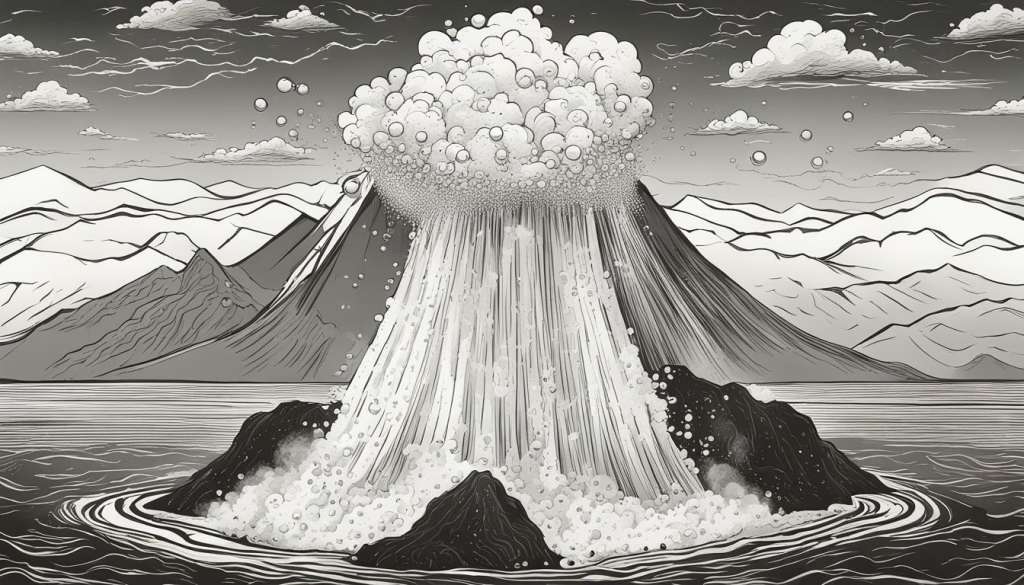
Conclusion
In conclusion, rice cooker bubbling is a common phenomenon during rice cooking. While it may cause concern to some, it is important to understand that it is a natural part of the cooking process and, in most cases, is not a cause for concern.
However, excessive bubbling can lead to messy spills, overcooked or undercooked rice, and potential damage to the rice cooker itself. Therefore, it is essential to identify and troubleshoot any bubbling issues as soon as they arise.
Tips for Prevention:
Preventative measures such as rinsing rice before cooking, using appropriate water ratios, and selecting the right type of rice can help minimize excessive bubbling. Additionally, proper cleaning and maintenance can prevent bubbling issues in rice cookers and ensure optimal performance.
Expert Recommendations:
To achieve perfect rice cooking results while minimizing bubbling, expert recommendations include soaking rice, using the right type of rice cooker, and adjusting cooking times according to personal preferences.
It is crucial to understand that misconceptions surround rice cooker bubbling, and it is vital to have factual information to better understand the nature of bubbling in rice cookers.
Overall, with proper preventative measures, troubleshooting techniques, and expert recommendations, rice cooker bubbling can be minimized, resulting in perfectly cooked rice every time.
FAQ
Q: Is it normal for a rice cooker to bubble while cooking?
A: Yes, it is normal for a rice cooker to bubble while cooking. The bubbling occurs as the rice absorbs water and releases starch, which causes the water to froth and create bubbles.
Q: How does a rice cooker work?
A: A rice cooker works by using a heating element to heat the inner pot, which then transfers the heat to the rice and water. As the water reaches boiling point, it creates steam, which cooks the rice. The bubbling occurs as a result of this cooking process.
Q: What causes excessive bubbling in a rice cooker?
A: Excessive bubbling in a rice cooker can be caused by factors such as using too much water, using rice with a high starch content, or cooking at too high of a temperature. These factors can result in the water boiling over and causing excessive bubbling.
Q: How can I determine if the bubbling in my rice cooker is normal?
A: To determine if the bubbling in your rice cooker is normal, you can observe the level of bubbling during the cooking process. A moderate amount of bubbling is usually normal, but if the water bubbles up and overflows the pot, or if the bubbling is excessive and consistent throughout the cooking cycle, it may indicate a problem.
Q: What are the risks and concerns of excessive rice cooker bubbling?
A: Excessive rice cooker bubbling can lead to messy spills, overcooked or undercooked rice, and potential damage to the rice cooker itself. It can also be a safety hazard if the boiling water spills onto a hot surface or comes into contact with the user.
Q: How can I troubleshoot rice cooker bubbling issues?
A: To troubleshoot rice cooker bubbling issues, you can try adjusting the water-to-rice ratio, reducing the starch content in the rice, or modifying the cooking temperature. By making these adjustments, you can minimize excessive bubbling and achieve better cooking results.
Q: What preventive measures can I take to avoid excessive rice cooker bubbling?
A: To prevent excessive rice cooker bubbling, you can rinse the rice before cooking to remove excess starch, use the appropriate water-to-rice ratio, and select the right type of rice for your cooker. These measures can help minimize bubbling and ensure more consistent cooking results.
Q: How should I clean and maintain my rice cooker?
A: Proper cleaning and maintenance are essential to prevent bubbling issues in rice cookers. You should regularly clean the cooker, remove any residue, and conduct maintenance checks to ensure optimal performance. Refer to the manufacturer’s instructions for specific cleaning and maintenance guidelines.
Q: What are some expert tips for optimal rice cooking?
A: For optimal rice cooking, you can soak the rice before cooking to improve texture, choose the right type of rice cooker for your needs, and adjust cooking times according to your preferred rice consistency. These tips can help you achieve perfect rice results while minimizing bubbling.
Q: Are there any common misconceptions about rice cooker bubbling?
A: Yes, there are some common misconceptions about rice cooker bubbling. One misconception is that excessive bubbling means the rice is cooking faster, but in reality, it may indicate an issue with the water-to-rice ratio or cooking temperature. It’s important to understand the true causes of bubbling in rice cookers.


